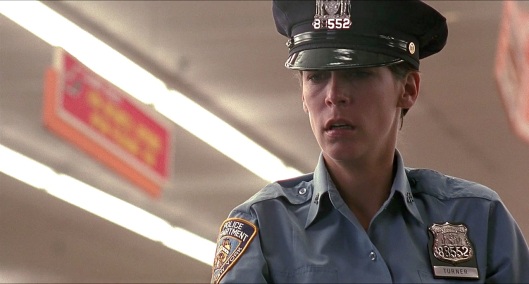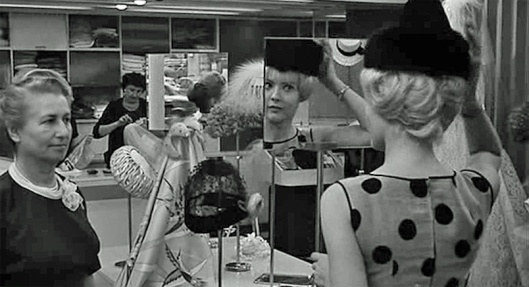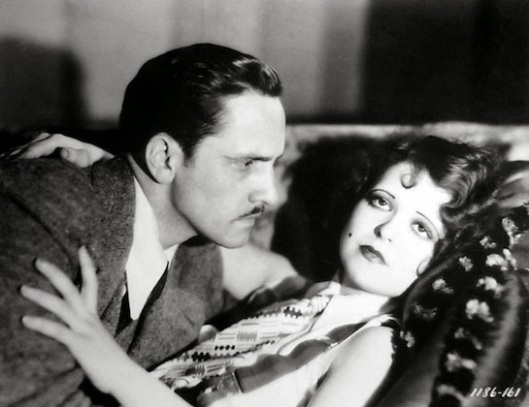Tags
Black goo, Bojana Novakovic, Changeling, Conservation, Corin Hardy, Drama, Faeries, Horror, Ireland, Irish folklore, Joseph Mawle, Review, Thriller, Tree felling
Original title: The Woods
D: Corin Hardy / 97m
Cast: Joseph Mawle, Bojana Novakovic, Michael McElhatton, Michael Smiley
Premiered at the Sundance Film Festival this year, The Hallow has garnered a great deal of positive buzz about it, with even some mainstream critics won over by its combination of rural Ireland setting and demonic creatures from Irish folklore (they’re a difficult bunch to please, mainstream critics; horror isn’t a genre they particularly care for). But while it’s always good to hear any horror movie get a positive response, when it comes from the mainstream it’s always worrying, as it raises expectations a little too high. The Babadook (2014) is a recent case in point, being a horror movie that William Friedkin avowed would “scare the hell out of you as it did me” (the movie is good, just not that good).
So is The Hallow in the same (presumed) league? When the movie was in production it certainly looked like it would be, and the initial response coming out of Sundance was encouraging, but now that the movie is available to a wider, more fan-based audience, it seems that our hopes have been cruelly dashed once again. For what begins as a creepy, atmospheric twist on the home invasion genre soon descends into the kind of aimless let’s-run-around-the-woods-in-circles-over-and-over-again scenario that we’ve seen countless times before. It’s not fun to watch, and once again it involves a female character having to make stupid mistakes in an attempt to generate tension. It doesn’t matter how many times we see this kind of thing, it always means one thing: the writers – in this case director Hardy and Felipe Marino – have run out of story ideas.
The set up here is a simple one: an English conservationist, Adam Hitchens (Mawle), moves with his family to Ireland where his job is to earmark trees in a forest for future felling. This angers not only the locals but ensures he earns the wrath of the faery creatures who live in the forest. In retaliation for his marking the trees with white X’s, they mount a terror campaign that involves breaking windows and skittering about just out of sight of the house where Adam lives. So far it’s a fairly standard set up, with Adam refusing to take notions of angry faery folk seriously, and falling back on unlikely scientific or rational explanations as the cause of all the strange happenings (the bird that’s had a few is a good one).
And of course, while Adam is busy ignoring the evidence that’s right in front of his eyes, and on the camera that he doesn’t refer back to after he’s snapped one of the snarling faeries, his increasingly beleaguered wife, Clare (Novakovic), is doing her best to hold it all together. This involves going along with Adam’s weak reassurances that faeries don’t exist and that he can deal with whatever is “out there”. And then there’s their child, Finn, the obvious target of the creatures, and continually placed in danger by his in-denial parents. (There’s a point where it becomes clear that if you mess with the faeries then they’ll come and swap your child for a changeling – which begs the question, what if you don’t have any children?) With the two main characters behaving like they’ve left their brains behind in England, The Hallow stutters through a middle third that sees them make one hare-brained mistake after another (seriously – who looks through a keyhole to see if the creature that’s been outside banging on the door has gone away?).
One critic has stated that the movie is “visually energized” and “dynamically paced”, and while it’s been very well shot by DoP Martijn van Broekhuizen – his use of low light levels is particularly good – the idea that it’s “dynamically paced” is stretching things. If there is any energy to the movie it’s sucked right out in the movie’s final third, as Clare’s attempts to flee with baby Finn fail, succeed, fail, possibly succeed, fail – you get the idea. At the same time, Adam, who’s fallen foul of an unfortunate poke in the eye (wonder where he got that from?) is in danger of becoming one of the faery folk, transforming as he is thanks to the demands of the script rather than any accepted piece of folklore. He joins Clare in wandering through the forest but he does it in a much cooler way, brandishing a flaming scythe, and waving it in a non-menacing way at any creature that hisses at him.
To be fair, the creatures/faeries/offspring of the Newborn from Alien: Resurrection (1997) (take your pick) are very well designed and executed by British SFX artist John Nolan, and are surprisingly effective despite being actors in suits backed up by a sparse use of CGI augmentation. Alas, Hardy chooses to make them only occasionally threatening, and even then in a way that won’t have audiences reaching for a cushion to hide behind. With their provenance limited to “well, it’s their forest, so you don’t mess with it”, the faeries’ physical appearance is left unexplained, and their actions are less persuasive, as Hardy chooses to strip any magical qualities they might have out of the script at the earliest opportunity. This leaves the notion of the changeling as the only supernatural aspect of the entire movie, and even then the reason for this occurring is dulled by the knowledge that the daughter of one of the villager’s was kidnapped by them, but no replacement was sent back.
Hardy has stated that he wanted to give the narrative “a more rational, scientific base than the traditional magic-based fable”, and to this end he introduces early on a black goo-like substance that has aggressive parasitic qualities. Whether this is produced by the faeries or works independently of them is never properly explained, but in either case it doesn’t bode well if you’re an animal or an unlucky conservationist, or just a viewer trying to work out why it’s there in the first place (except to set up a potential sequel, or an X-Files crossover). It’s an idea that ultimately isn’t given enough room to breathe, and like so many of the ideas Hardy populates the script with, is subsumed by the need to put Adam and Clare in as much peril as possible.
The main problem – and the “curse” alluded to in this post’s title – is that The Hallow, like a lot of modern horror movies that gain a degree of critical approval, tries hard to be different from the hundreds of other horror movies out there but still manages to make the same mistakes that all the rest do: it never manages to provide the audience with characters it can care about, it puts them in evermore ridiculous situations, has them behave irrationally (and run around in those ever decreasing circles), focuses more on the special effects, and abandons its own internal logic in favour of a semi-bravura showdown between the hero (or heroine) and the villain(s). It’s a shame that so few directors of horror movies understand what actually works, but every week we’re confronted with the evidence that supports this, whether it’s the latest franchise cash-in that just repeats the mistakes of its predecessors (and usually on a smaller budget), yet another serial killer/haunted house/paranormal activity variation, or something that has ideas above its station. But if one thing can be relied on, it’s that horror movie fans must be the most forgiving fans out there, because they keep on coming back for more, and that in itself is more scary than a whole host of horror pretenders.
Rating: 5/10 – bolstered by its visual style and location shooting, The Hallow looks the business but fails to deliver in terms of scares, thrills or credibility; a worthy effort, though a bit like the horror movie version of The Emperor’s New Clothes, and the first movie to show how easy it is to kick through the back seat of a car from the confined space of the boot.





















































































































